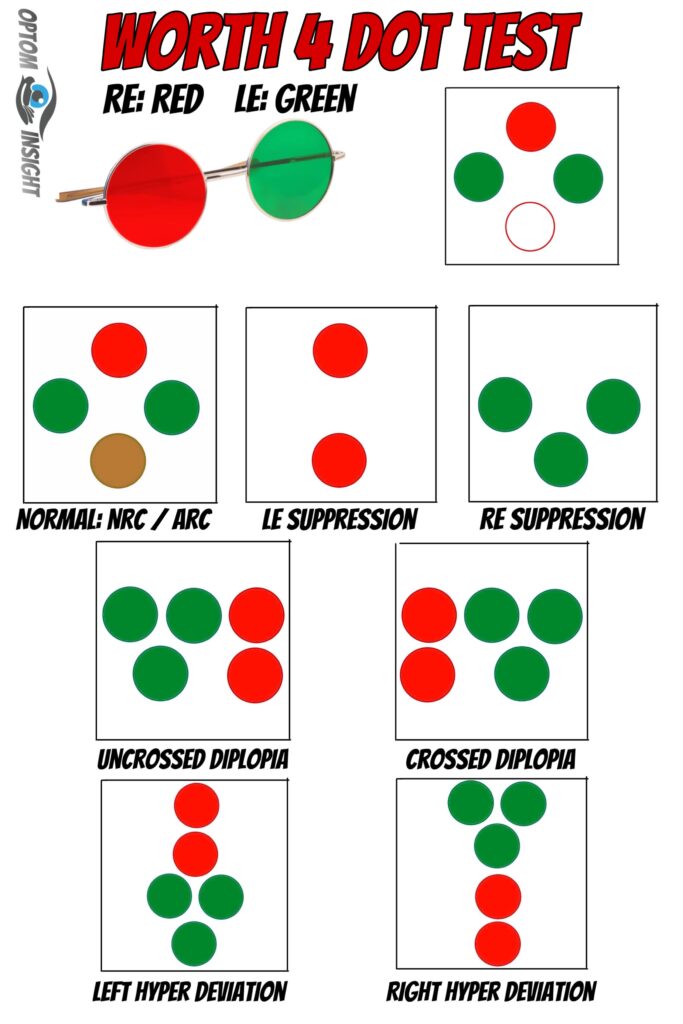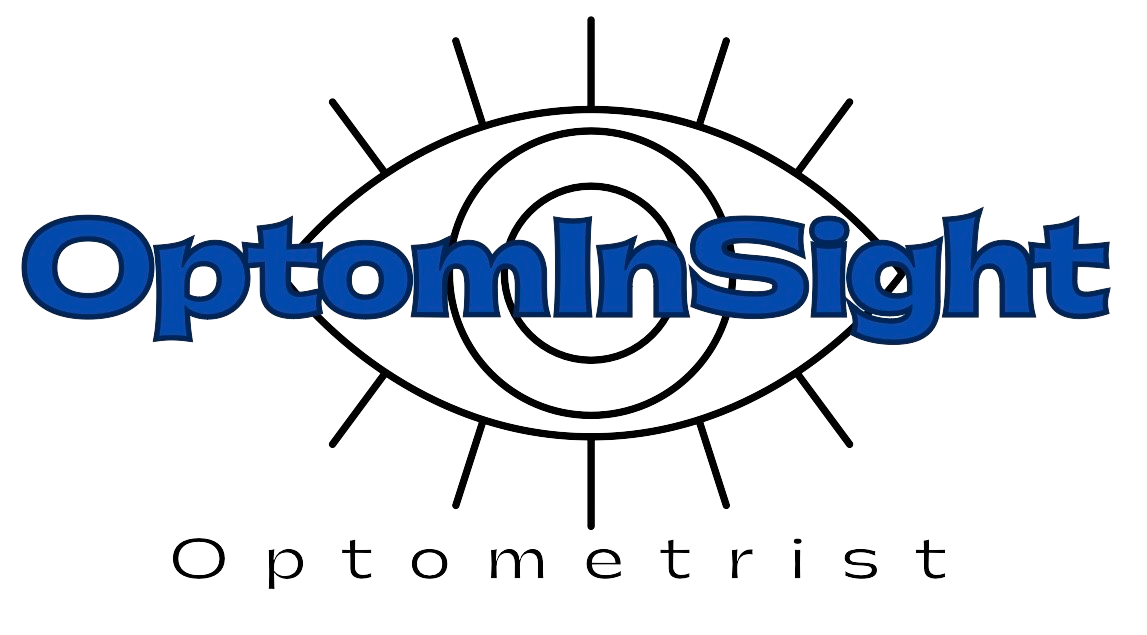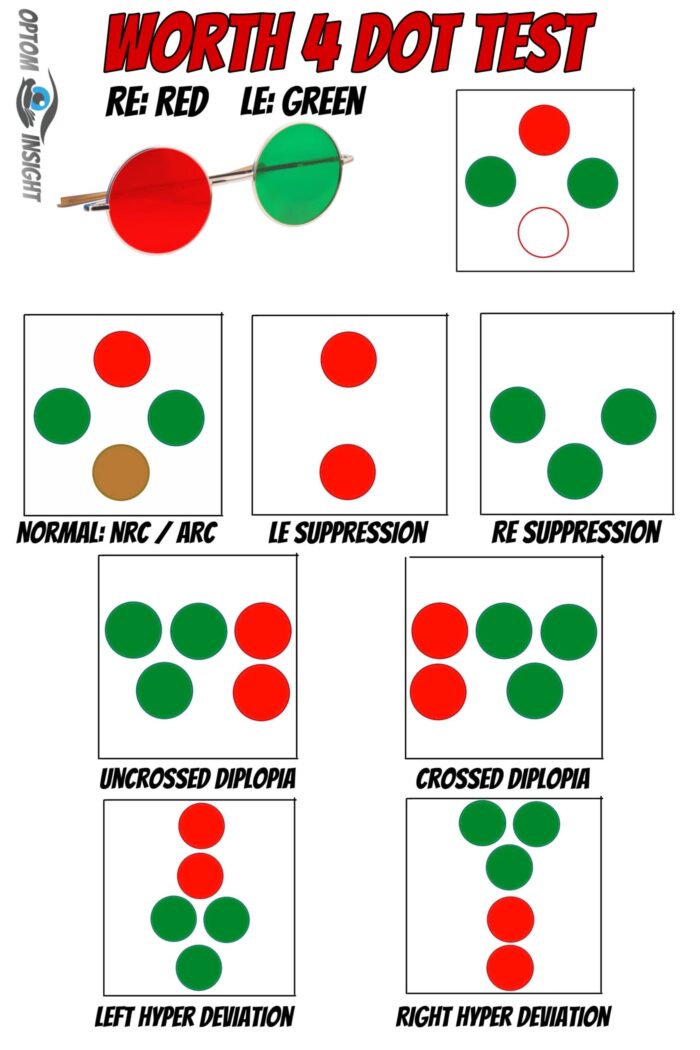Worth four dot test is a subjective procedure test to evaluate the presence of fusion, suppression, diplopia and abnormal retinal correspondence.
The test can be performed for both distance and near
- Distance worth 4 dot test: The distance target is a self-illuminated drum containing four dots: one red, two green and one white.
- Near worth 4 dot test: Near target is a flashlight containing four dots: one red, two green and one white.
Procedure:
- The patient is asked to wear his/her correction and red-green glasses on top.
- It is a binocular procedure
- Distance worth 4 dot test testing distance is 6 meters.
- Near worth 4 dot test testing distance varies from 33cm to 1 m. Variations in near worth testing distance allow the examiner to differentiate between small suppression scotoma and large suppression scotoma. When the examiner holds near worth four flashlight 33 cm away from the patient’s eye each dot of the flashlight subtend approximately 4.5 degrees and if flashlight is moved away from the patient, it will reduce subtend angle. At a distance of 1m away from the patient, dots subtend approximately 1.5 degrees.
Ask the patient these questions
- How many dots do you see?
- What color are they?
- If a patient sees five dots, where some are red and some are green, ask if you can determine the position of the red dots and the green dots. Specifically, is it possible to determine whether the green dots are located to the right or left of the red dots?
- Are dots arranged in a line, or are they positioned at different heights?
Interpretation
All below mentioned interpretation is for eyes when red glass is in front of the patient’s right eye and green is in front of the patient’s left eye

If the patient sees all four dots: Two possibility
- Normal retinal correspondence with no manifest squint (patient will be orthophoric or absence of tropia)
- Abnormal retinal correspondence with a manifest squint (presence of tropia)
If the patient sees 3 dots: suppression of the Right Eye
If the patient sees 2 dots: suppression of Left eye
If the patient sees 5 dots: Diplopia
- Uncrossed diplopia: if the patient sees green dots towards the left side of red dots it indicates uncrossed diplopia. This response is given by a patient with Esotropia.
- Crossed diplopia: if the patient sees green dots towards the right side of red dots it indicates crossed diplopia. This response is given by a patient with Exotropia.
- If the patient sees green dots higher than red dots it indicates right hyper deviation or left hypo deviation
- If the patient sees Red dots higher than green dots it indicates right hypo deviation or left hyper deviation
If the patient can report 4 dots at 33 cm but is not able to report all four (two red or three green) at 1m this indicates the presence of small suppression scotoma. If the patient is not able to report all four dots at 33 cm indicates a large suppression scotoma.
Lecturer (Nethradhama School of Optometry)
Moptom

